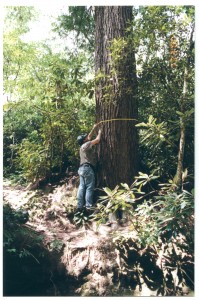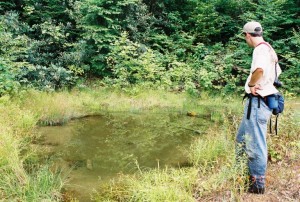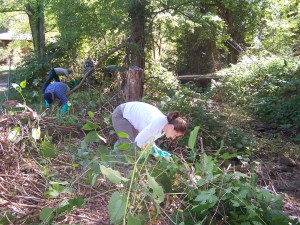Welcome back readers! We hope you enjoyed last week’s entry which detailed our Conservation Planning Group’s efforts to respond to climate change via proper planning, coordination of groups and their resources, and regulatory environmental assessment. This week we’ll be discussing our Ecological Services group. They are our on-the-ground, real-time ecological monitoring and assessment team, and they do a lot to help mitigate and adapt to climate change.
Our Ecological Services Group helps to mitigate and adapt to Climate Change in various creative ways. Our services includebaseline documentation, Phase I environmental assessments, stream restoration monitoring, and open space & habitat management, all of which help to establish and maintain healthy ecosystems that function at the highest possible levels.
It is vitally important to collect precise data, especially when it comes to ecological sciences. Our Natural Resources Inventory & Monitoring services guarantee just that. Baseline Documentation Reports, one of our specialties, include ecosystem analysis and help to determine the quantity and quality of forests on a given property. These forests can translate into carbon ‘sinks’, areas which capture and store atmospheric carbon and reduce Greenhouse gas presence. Baselines are designed to establish ‘baseline’ conditions on properties which are being put into conservation for perpetuity, and so those forests will always be protected and continue to act as sinks, leading to the guaranteed continuation of carbon sinking throughout time. The conservation of natural areas can also preserve corridors for species movement so plants and animals can migrate as plant hardiness zones and habitat ranges begin to shift due to climate change. Maintaining these corridors is essential to the preservation and expansion of natural, functioning ecosystems.

Stream and wetland monitoring also helps to address climate change by preserving forested lands around water resources and ensuring their success. At the onset of a project, the riparian area is restored to a more natural stream channel and is replanted with thousands of woody trees, all of which will grow to uptake and store carbon. When we monitor the vegetation on a project, we provide a picture of the overall success of the vegetative buffer which will remain forested for perpetuity. Like the forests inventoried in baseline documents, these riparian forests also help sink carbon and will do so forever. Also, the vegetative buffer is important to the restored stream because it provides shading and slows the flow of the water to provide habitats for various vertebrate and invertebrate organisms. Furthermore, the preservation and monitoring of our precious wetlands is vital to mitigating the influx of pollutants from sources associated with greenhous gas increases and climate change – they are incredible filters, and when we monitor them and confirm they’re functioning properly, we’re ensuring a reduction of pollutants within our soils and water tables. All of these qualities mean cleaner, healthier outflow which helps to support a healthy ecosystem downstream. Healthy ecosystems provide the necessary ‘environmental purification’ (like carbon sinking and filtering of contaminants) to maintain a healthy planet.

Finally, our open space and habitat management services help to re-establish native vegetation where invasive-exotic plants have come in. The invasive plants which invade healthy ecosystems grow rapidly and overtake native plants and communities are generally smaller in size and biomass, and store a considerably smaller proportion of carbon than those larger, native trees and shrubs. As climate change continues to build, invasive-exotic plants thrive in the warmer temperatures, producing more seed and spreading more rapidly. When we help remove these species, we ensure that the healthy native ecosystem will survive and continue to absorb and store atmospheric carbon and reduce Greenhouse gases.

To sum it up, the world needs science to understand climate change, and Equinox’ Ecological Services group understands that necessity. Our work restores and preserves natural ecosystems while simultaneously helps to build on a set of data used to better the process of ecological restoration.
Tune in next week for our last installment in this 3-part series outlining Equinox’ External Response to Climate Change. Thanks!
